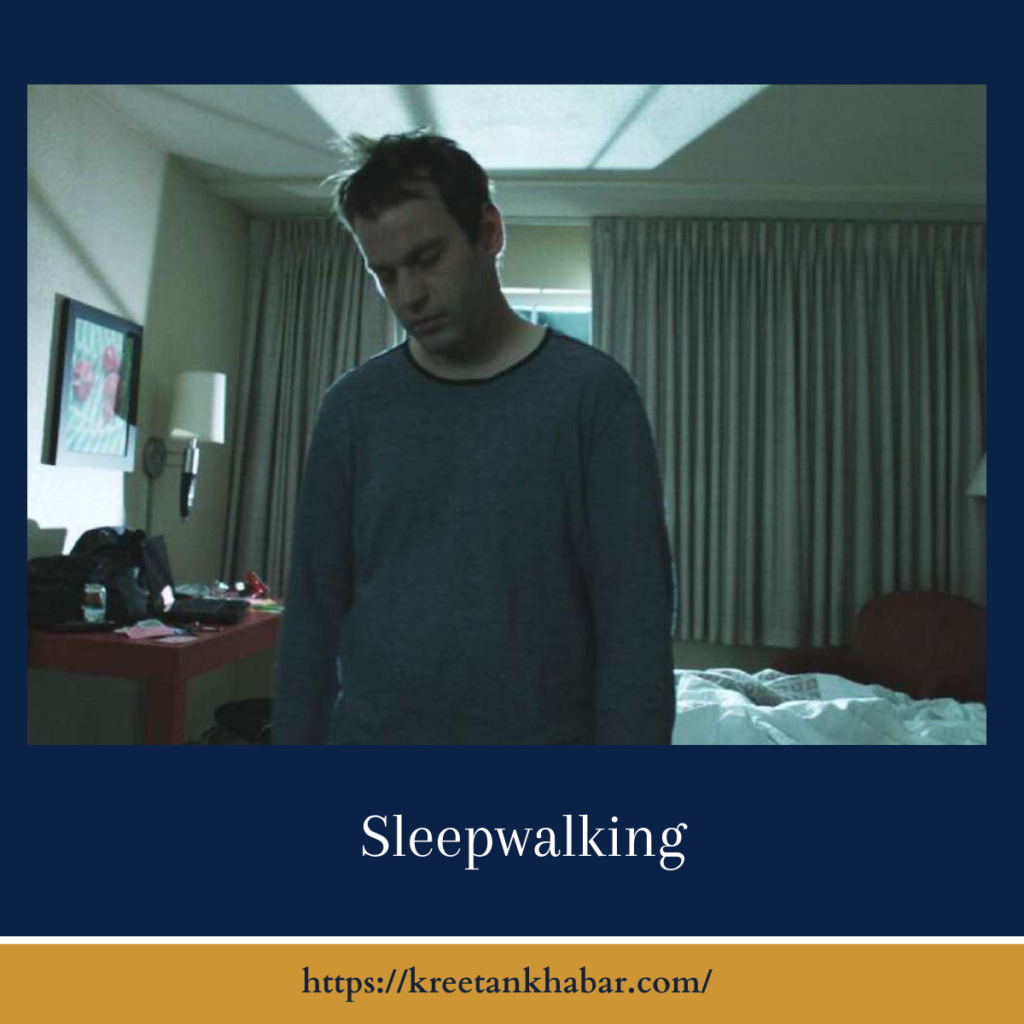Sleepwalking
Introduction:
In the silent hours of the night, a mysterious phenomenon unfolds, leaving those who experience it in a realm between wakefulness and sleep. Sleepwalking, or somnambulism, is a captivating yet enigmatic journey that takes individuals on nocturnal strolls, all while they remain immersed in the profound depths of sleep. Let’s embark on a journey through the shadowed corridors of somnambulism, exploring its intricacies, potential causes, and the delicate balance between the conscious and unconscious mind.

The Dance of Sleepwalking:
somnambulism is a sleep disorder characterized by complex movements or behaviors performed during non-REM (rapid eye movement) sleep. From simple actions like sitting up in bed to more elaborate activities such as walking around the house, sleepwalkers engage in a nocturnal ballet that is both captivating and puzzling. This phenomenon often occurs in the first few hours of sleep, during the deep, slow-wave stages.
Potential Causes:
The causes of somnambulism are a complex tapestry woven from threads of both biology and environment. In the realm of genetics, there exists an intriguing predisposition, suggesting that familial ties may contribute to one’s nocturnal wanderings. Sleep deprivation, akin to a disruptor of the body’s circadian rhythm, creates a fertile ground for the emergence of sleepwalking episodes, revealing the intricate dance between rest and wakefulness.
Emotional turbulence finds its place in this narrative as stress and anxiety act as catalysts, propelling the subconscious into a realm where physical movements become the silent language of the night. The sleeping environment itself, subject to change or disruptions, holds a role in this nocturnal ballet. Lastly, medical conditions, such as fever or sleep disorders, may cast shadows on the delicate boundary between dreaming and walking. Unraveling the causes of somnambulism is akin to deciphering a cryptic dream, where the mind orchestrates its own enigmatic symphony during the depths of sleep.
- Genetic Predisposition: Research suggests a genetic link to sleepwalking, indicating that individuals with a family history of somnambulism may be more prone to experiencing it themselves. Certain genetic factors may influence the regulation of sleep patterns.
- Sleep Deprivation and Fatigue: Insufficient sleep or chronic fatigue can contribute to the onset of somnambulism episodes. Disruptions in the sleep-wake cycle may lead to a state where the body is caught between sleep and wakefulness, fostering the conditions for sleepwalking.
- Stress and Anxiety: Emotional stress or anxiety can act as triggers for somnambulism. The mind, grappling with unresolved thoughts or tension, may manifest these struggles through physical movements during sleep.
- Sleeping Environment: Changes in sleeping environment or disruptions to regular sleep patterns, such as sleeping in an unfamiliar place or experiencing interruptions during the night, can increase the likelihood of sleepwalking.
- Medical Conditions: Certain medical conditions, including fever, seizures, and sleep disorders such as sleep apnea, may be associated with somnambulism. Understanding and managing these underlying conditions can be essential in addressing sleepwalking episodes.
More points of causes:
- Genetic Factors: The presence of sleepwalking tendencies within families suggests a genetic link. Individuals with a family history of somnambulism may have an increased likelihood of experiencing nocturnal wanderings themselves.
- Sleep Deprivation: The delicate balance between rest and wakefulness can be disrupted by sleep deprivation. Inadequate sleep or chronic fatigue may create conditions conducive to the emergence of sleepwalking episodes.
- Stress and Anxiety: The emotional landscape plays a significant role in somnambulism. Stress and anxiety act as potential triggers, manifesting unresolved tension through physical movements during sleep.
- Changes in Sleeping Environment: Alterations to the sleeping environment or disruptions in regular sleep patterns, such as sleeping in an unfamiliar place or experiencing interruptions during the night, can elevate the likelihood of somnambulism.
- Medical Conditions: Underlying medical conditions, including fever, seizures, and sleep disorders like sleep apnea, may be associated with somnambulism. Managing these conditions is essential in addressing the root causes of nocturnal wanderings.
Understanding the causes of somnambulism involves navigating the intricate interplay of genetic predispositions, sleep hygiene, emotional well-being, environmental factors, and underlying medical conditions, shedding light on the complex mechanisms that govern our nocturnal adventures.
Living with Sleepwalking:
For those who experience sleepwalking, the nocturnal escapades can be both perplexing and, at times, concerning. While the sleepwalker is unaware of their actions, the individuals around them may find themselves in a delicate position of ensuring safety without fully waking the sleepwalker. Creating a safe sleeping environment, removing potential hazards, and seeking professional guidance are crucial aspects of managing somnambulism.
Management and Support:
- Improving Sleep Hygiene: Establishing a consistent sleep routine, ensuring a comfortable sleep environment, and prioritizing adequate sleep duration can contribute to overall sleep quality and potentially reduce sleepwalking incidents.
- Stress Management Techniques: Incorporating stress management techniques, such as relaxation exercises or mindfulness practices, may help alleviate emotional tension that could contribute to sleepwalking.
- Medical Consultation: Seeking guidance from a healthcare professional is essential, especially if sleepwalking episodes pose a risk to the individual or others. Identifying and addressing any underlying medical or psychological factors is a key component of effective management.
- Safety Measures: Implementing safety measures in the sleeping environment, such as removing obstacles or installing gates on stairs, can help prevent injuries during sleepwalking episodes. Ensuring that windows and doors are secure can also add an extra layer of safety.
Conclusion:
The dance of sleepwalking invites us into the mysterious realm where the unconscious mind takes center stage. While the causes and intricacies of sleepwalking may remain veiled in part, a holistic approach that combines understanding, safety measures, and professional guidance can illuminate the path for those navigating this nocturnal journey. As we delve into the shadowed corridors of sleepwalking, we find a delicate balance between the mysteries of the mind and the practicalities of ensuring a safe and restful night’s sleep.
Read also : Exploring the Delightful Boost of the Green Tea Shot 2023